Honor Award
Wurstershire Sauce
Chris DeHenzel, Student ASLA; Brian Gillett, Student Affiliate ASLA; Robert Glass, Student ASLA; Rockne Hanish, Student Affiliate ASLA; Molly Mehaffy, Student ASLA; Alexis Opos, Associate ASLA and William Smith, Associate ASLA, Graduate,
University of California, Berkeley
Faculty Advisor: Linda Jewell, FASLA
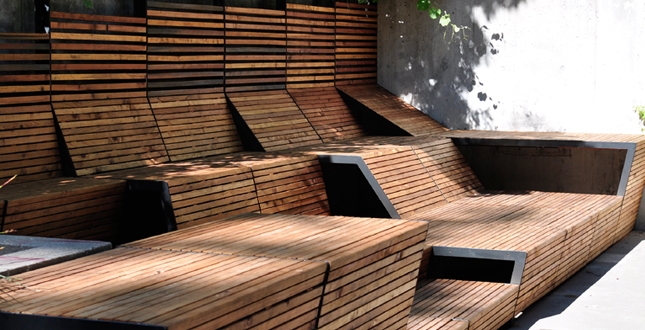
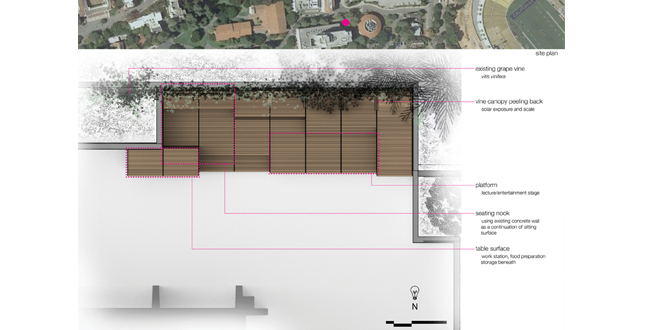
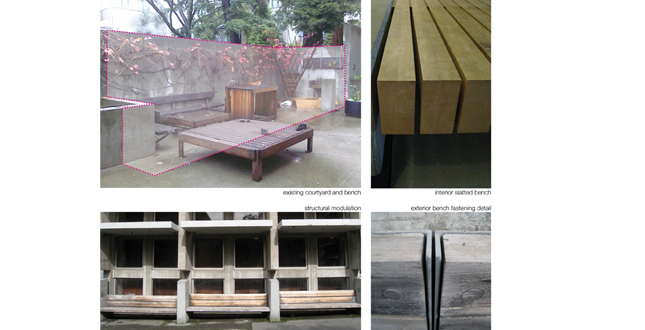 Close Me!
Close Me!Identify: Context. Top Left: Existing courtyard and bench. Top Right: Interior slatted bench. Bottom Left: Structural modulation. Bottom Right: Exterior bench fastening detail.
Download Hi-Res ImageImage: Student Team
Image 3 of 15
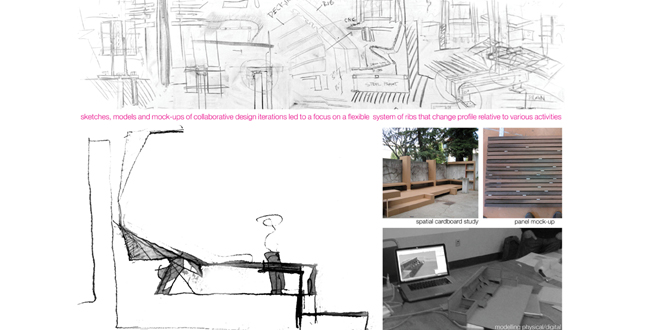 Close Me!
Close Me!Specify: Concept. Sketches, models and mock-ups of collaborative design interations led to a focus on a flexible system of ribs that change profile relative to various activities.
Download Hi-Res ImageImage: Student Team
Image 4 of 15
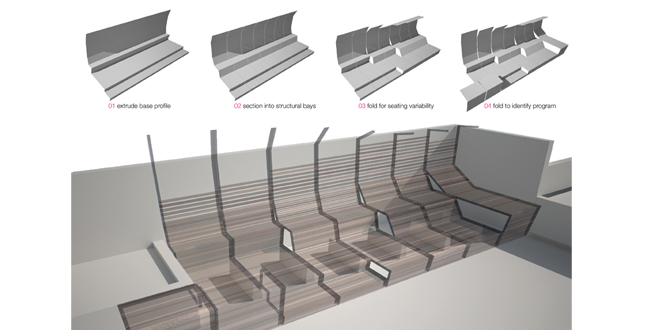
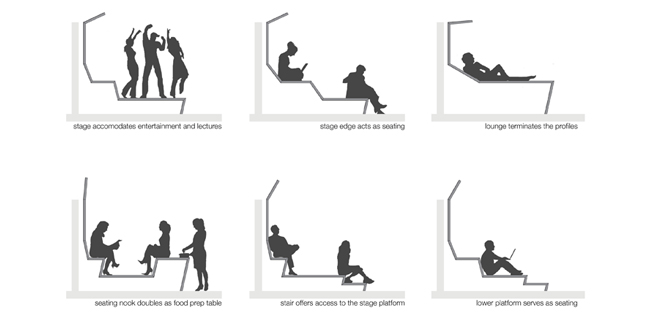
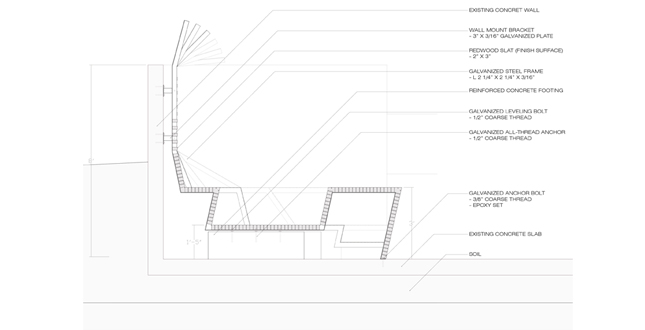

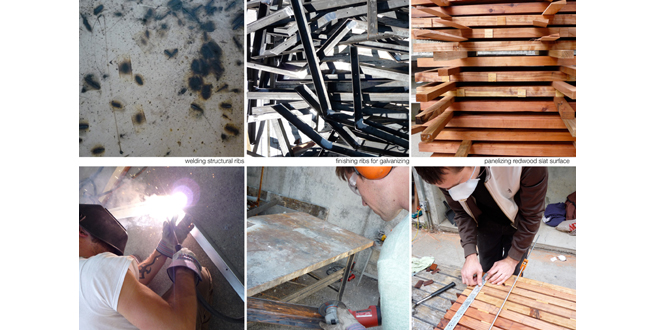
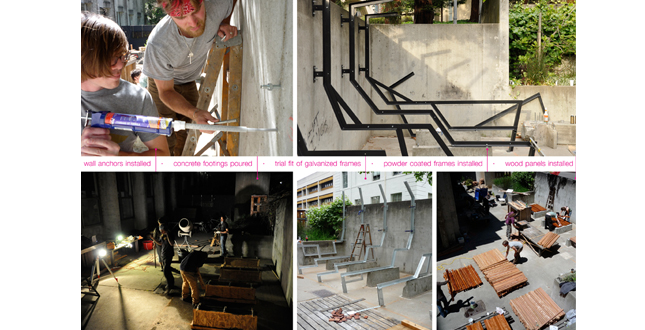
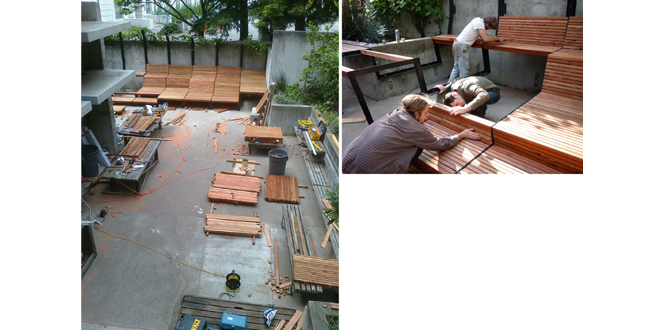

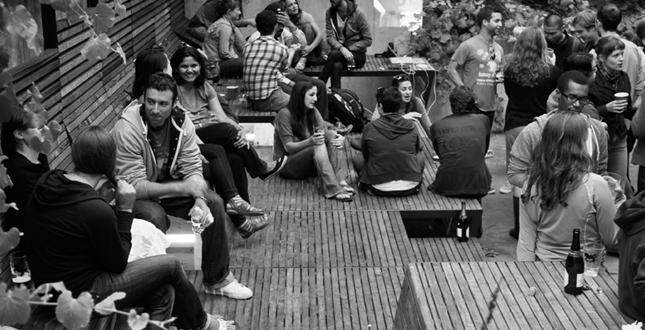
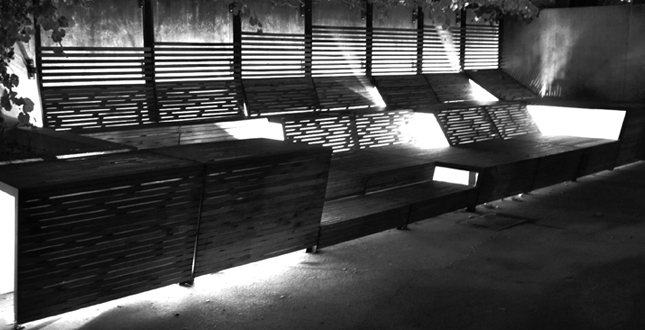
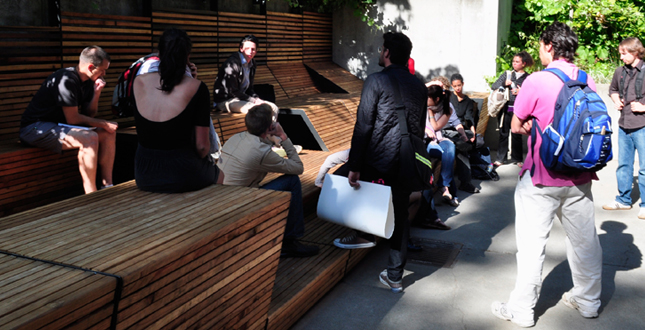
Project Statement
The project concept splits, folds, and stretches the conventional idea of a "bench," to accommodate numerous activities, and formally responds to the variable positions in which one might “sit”. The structural profile corresponds to function, providing an outdoor classroom, performance platform and social space that responds to existing site conditions. The design/build project allowed students to develop a broad range of skills, and manifests a pedagogical shift towards collaboration between architecture and landscape architecture at the university.
Project Narrative
—2011 Student Awards Jury
In the Spring of 2010 a team of Landscape Architecture and Architecture students led a design build seminar to rethink a little known courtyard on the northeast corner of their academic building. Prompted to build a bench, the student team challenged the ordinary definition of such an amenity. The result was an outdoor classroom, performance platform, and social space.
The team consisted of a number of skilled students who each brought something unique to the project. Among the fourteen participants the inventory of skills outside of the field of study in academia ranged from a metal fabricator, a CNC shop tech, a wood furniture maker, a natural materials builder, a carpenter, a landscape architect and a digital media expert. An initial investigation of the program and context yielded a set of criteria that the project would attempt to accommodate. The project needed to facilitate lecture space, social space for a bi-weekly happy hour, food preparation area, a stage for performances and lectures, work space, storage for landscape materials and tools, and informality for use in various social and individual situations. An existing grape vine in the courtyard was maintained through the inclusion of a trellis that formally integrates the structure with the site. The existing building elements provided formal and material inspiration. The details of existing wood furnishings or “attachments” and the structural module of the building became driving forces in the design. After a period of design charrettes and skill sharing opportunities the team executed two full scale cardboard mock-ups to test the spatial implications of the proposals. Small mock-ups were produced to test joints and materials as they might be applied to the larger installation. Models and drawings flooded the classroom twice a week for over a month where blackboard discussions were held to clarify and unite the proposals.
Upon the final iteration of the design, the team arranged into specialized groups to delegate tasks in a number of categories, from outreach, to steel team, to sourcing team, to scheduling and budgeting. The team visited a number of fabrication facilities in the area to source techniques and materials that might be applicable to the project. The design was further influenced and informed by material availability and cost, reflecting the continuity and resourcefulness of the finished project. A local mill contributed generously to the 100% recycled redwood that was used as the slatted surface. Once all materials were sourced and budgeted the fabrication process began.
The project is anchored to the ground with six concrete footings that accept the structural steel profiles of paired angle steel. Wall anchors stabilize the structure and hold it away from the wall for maintenance and aesthetic reasons. All of the steel was cut and welded using full-scale paper templates to ensure very accurate fabrication of the complicated profiles. As steel fabrication was underway the redwood slats were being fastened into panels that would later get dropped into place and bolted to the frame. This assembly system reflected the desire to see no hardware or fasteners on the finished project. The four-foot structural bay was utilized to minimize wasted wood cut-offs on the available lengths of lumber from the mill and to maximize the span of the wood slats.
The project reflects a commitment to sustainable design and construction through material source and durability considerations that include economy, aesthetic, and multi-functional use. The objectives of the project are tested daily, and the value of its flexibility has proven to not only accommodate but stimulate use. The success of this project depended on the diversity of its designers as well as future occupants, and reflects the potential richness in the overlap between students of landscape architecture and other design disciplines. It would not exist without the varying degrees of knowledge, interest, and skill that each member of the team contributed, or the support of the university in funding and promoting interdisciplinary design/build projects.
Additional Project Credits
Class Instructor: Yes Duffy
Other UC, Berkeley Landscape Architecture Graduate and Undergraduate Students:
Henry Richardson; Jeremy Osiris; Marisha Farnsworth; Anuar Azahari, Chris Lesnett; Alexis Steiner; Alyssa Machle; Kenya Huezo; and Kirsten Hemming






